Welcome to this twentieth reflection on In Fragments — this week exploring Electric Webb (Power Lines), a ritual to install a new “energy grid” using a network of “lightning transformers”:
In a ceremony a couple years ago, I received a powerful teaching. I was invited to think of some things for which I felt grateful. Various people, items, and situations quickly came to mind. I was invited really to embrace the feeling of gratitude, so that I could better understand its particular qualities: the way it affected my entire sense of being. Then, I was invited to release the objects of gratitude, while retaining the underlying feeling. What remained was gratitude in its purest form: a feeling-without-object — the archetypal energy of “gratitude” itself.
I’ve come to believe that all things are like this. We are swimming through a sea of archetypal energies that interact with one another to produce the world of external phenomena, in much the same way as a neural network renders imagery in response to a prompt. It appears to us that these external objects cause our inner feelings (that man makes me mad, that sunset makes me happy), but they are actually expressions of a deeper underlying reality: a realm of archetypal forces like gratitude, fear, joy, sadness, and love that merge and blend with one another to create the unique characteristics of each lived experience.
These archetypal energies accrue in places over time — creating what we sometimes call the “vibe” of a place. Visit a monastery, and you’ll feel the energy of peace and prayer. Visit a well-loved taverna and you’ll feel the energy of conviviality and celebration. Visit a prison, and you’ll feel the energy of conflict and constriction. Patterns of behavior tend to attract more of the same, so places have a way of becoming even more intensely what they already are, codified in myriad practical ways like architecture, landscape, legislation, and tradition.
How can we change up the “charge” of a place to disrupt the inertia of its inherited patterns? How can we create a new “energy grid” to shape what happens there in the future? Words like “gratitude” are really just pointers to bundles of energy: specific frequencies within the spectrum of all possibilities. Language then is a tool we can use to invoke these underlying energies, which we can gather into mandalic groups that function as intentional maps to guide a particular future. When we have a common map, our collective reality becomes more coherent.
This twentieth ritual of In Fragments is about anchoring such a mandala in reality — literally rooting it in a physical landscape, performing a kind of “earth acupuncture” to shape what happens in a particular place over time. Because the animating force in all of this is the conscious act of intention (as expressed here through language), the essential question is how to energize and amplify intention.
Inspired by the name of my great-grandmother, Electra Havemeyer Webb — and by my visit to Walter De Maria’s The Lightning Field, I felt that the electricity from lightning strikes would be the best way to power our “new energy” grid of intentions. As a modernist, De Maria chose a strict grid for his Lightning Field, imposing the rational order of modernism on the wild New Mexico landscape. If the basic ethic of modernism was “there’s only one objective reality” (symbolized by the grid), then today’s ethic of emergence might be “there are infinite subjective realities in relationship with one another” (symbolized by the web — or “webb”).
I began to explore the geometries of early American quilts from Electra’s collection, with their iconic “Star of Bethlehem” patterns. I also explored traditional dharmic mandalas such as the Sri Yantra, while reflecting on my own personal history with the “number 27” (which I used for many years as my pen name). I wanted to find a geometry that could integrate these various elements, ultimately designing a pattern composed of nine equilateral triangles with twenty-seven intersecting vertices and a nine-sided empty space (or nonagon) within.
Using Google Maps, I overlaid this geometry on the High Acres Farm landscape, encompassing around forty acres of land, while assigning a single word to each vertex that somehow spoke to the history and/or desired future of that particular location (e.g. “Dreams” near the site of Paper Weight, “Peace” near the old main house, etc.).
To activate each node in the network, I designed a custom instrument known as a “lightning transformer” — a tool to channel the raw electricity from lightning strikes to charge the earth with a particular intention. The tool is made of powder-coated steel, copper points, clamps, and wiring, and a laser-engraved glass mirror. When lightning strikes the copper point, the electricity follows the copper wire twice around the mirror, before traveling down the back of the post and safely into the ground, charging the land with the intention engraved on the mirror.
Working with local fabricators, I gathered the various components to create twenty-seven of these lightning transformers, which I then assembled by hand.
Using a GPS device, I located the precise longitude and latitude coordinates for each of the twenty-seven vertices — burying each transformer in two feet of concrete, along with a linestone, a chunk of quartzite, and a clear glass marble.
Before installing each transformer, I dipped its copper point in rain water held in the glass vessel made of my mother’s ashes in Phase Change — uniting, as in the Parsifal myth, the feminine and masculine principles as a way of restoring balance on our land.
Because each transformer is mirrored, and because they all face inwards to a common center point, when any single transformer is struck by lightning, the energy not only charges the particular intention engraved on that mirror as it passes into the ground — but also travels to the other twenty-six mirrors in the network, energizing the entire mandala at once, transmitting the full set of intentions into the land.
One can imagine these invisible lines of energy not only connecting each mirror to its peers, but also extending outwards to the surrounding landscape — affecting the town of Shelburne, the rest of Vermont, and the larger world beyond.
As Carl Jung writes in Man and his Symbols:
The mandala serves a conservative purpose — namely, to restore a previously existing order. But it also serves the creative purpose of giving expression and form to something that does not yet exist, something new and unique. The process is that of the ascending spiral, which grows upward while simultaneously returning again and again to the same point.
Now we wait for lightning.
— Jonathan




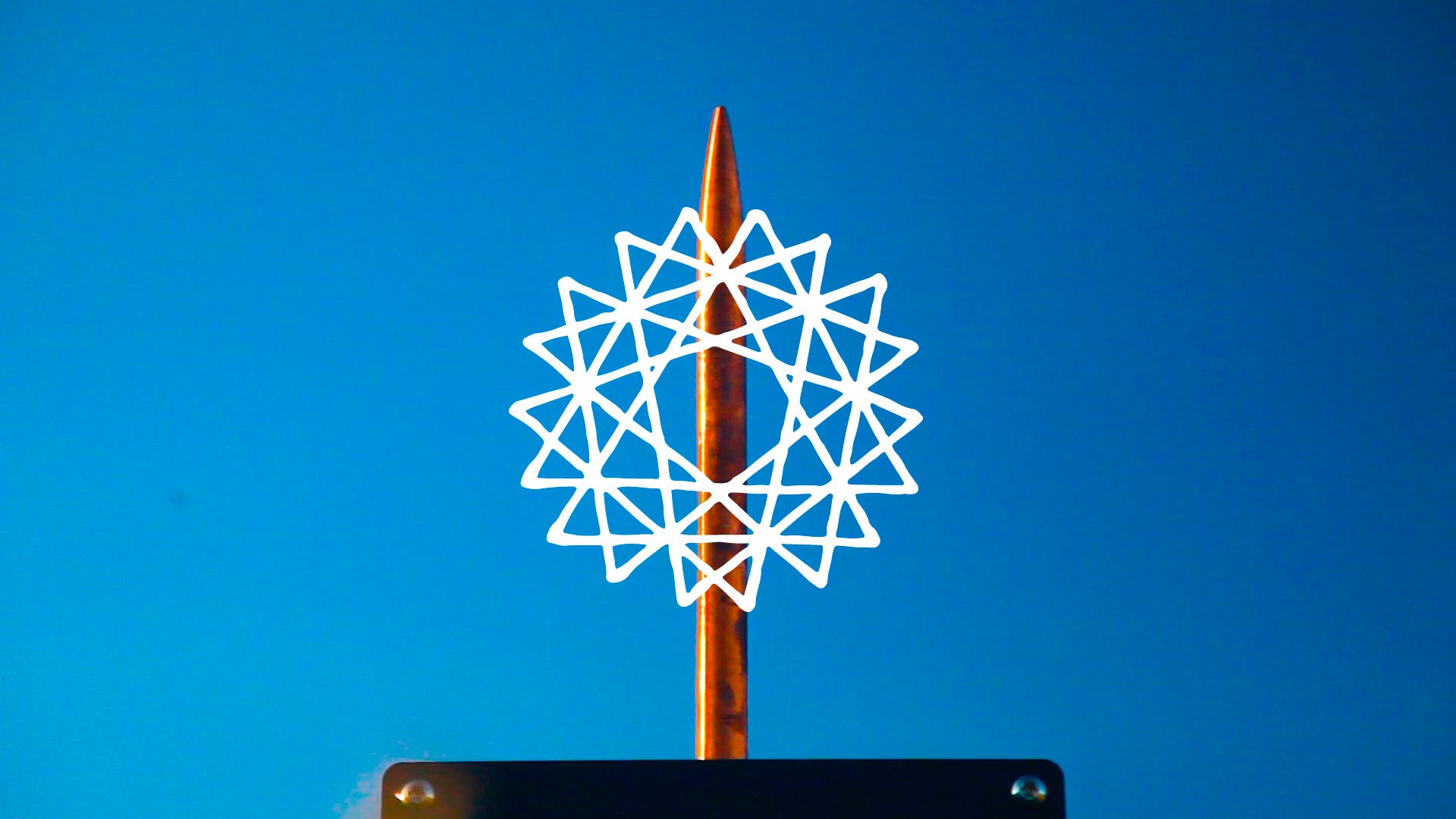


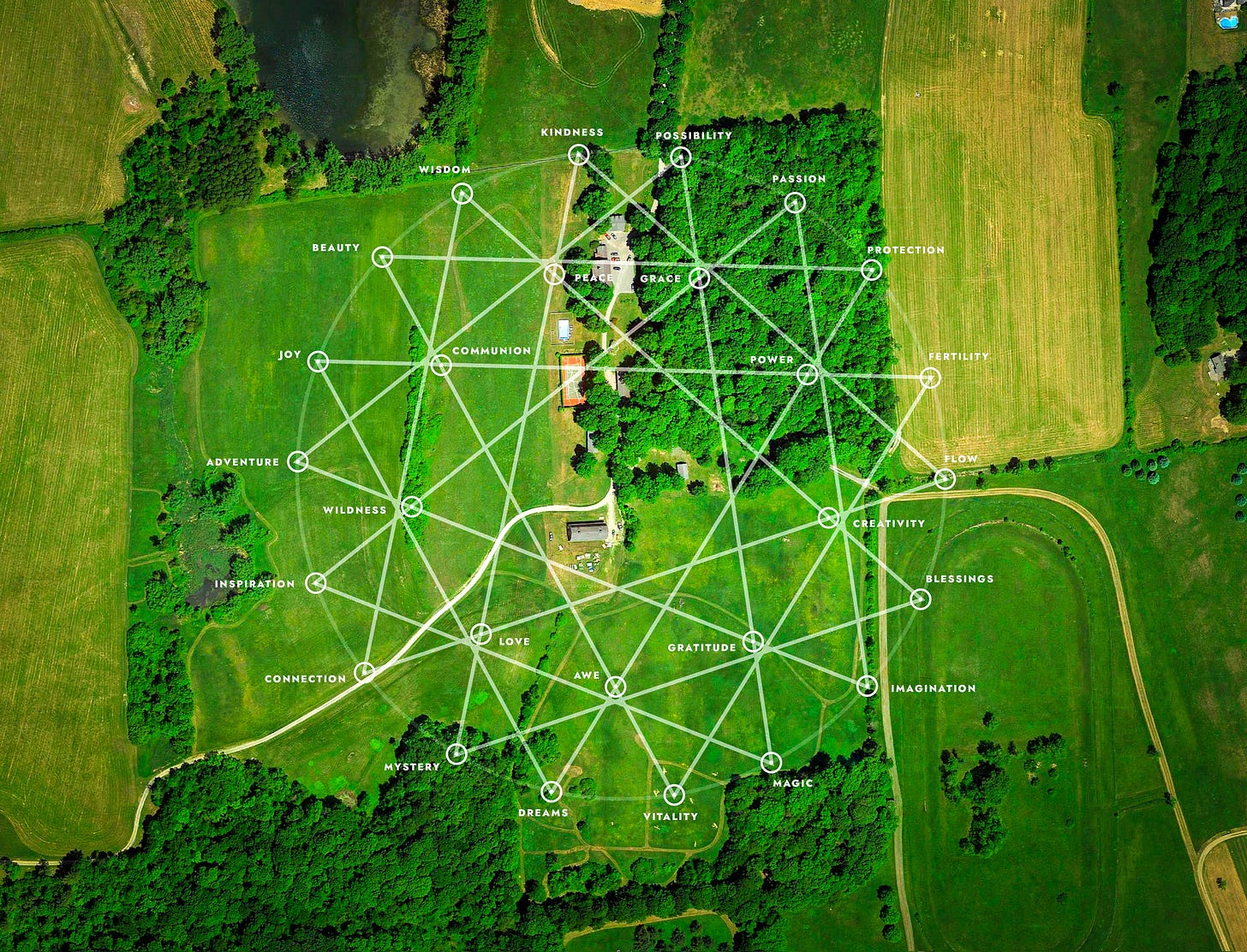
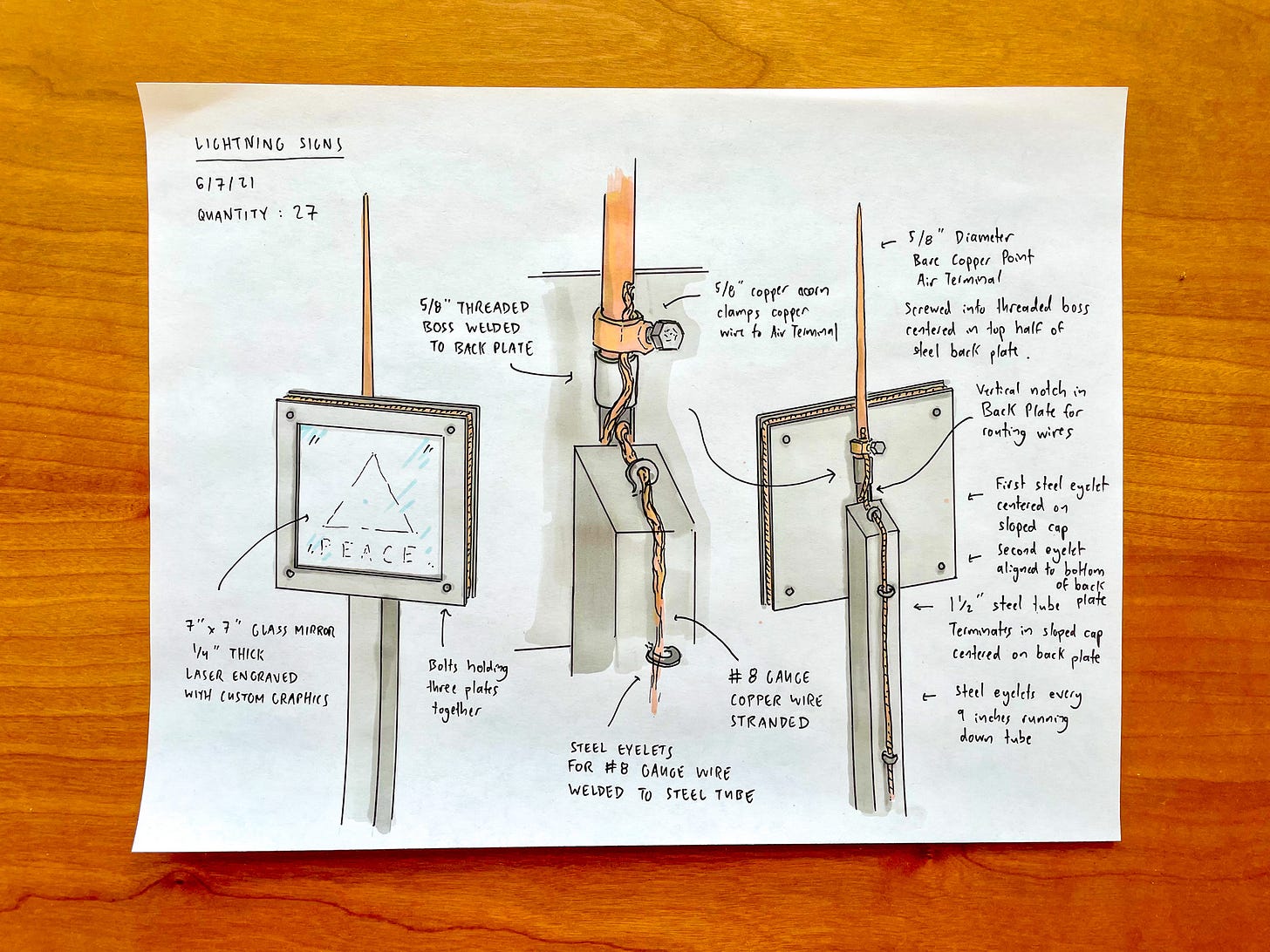
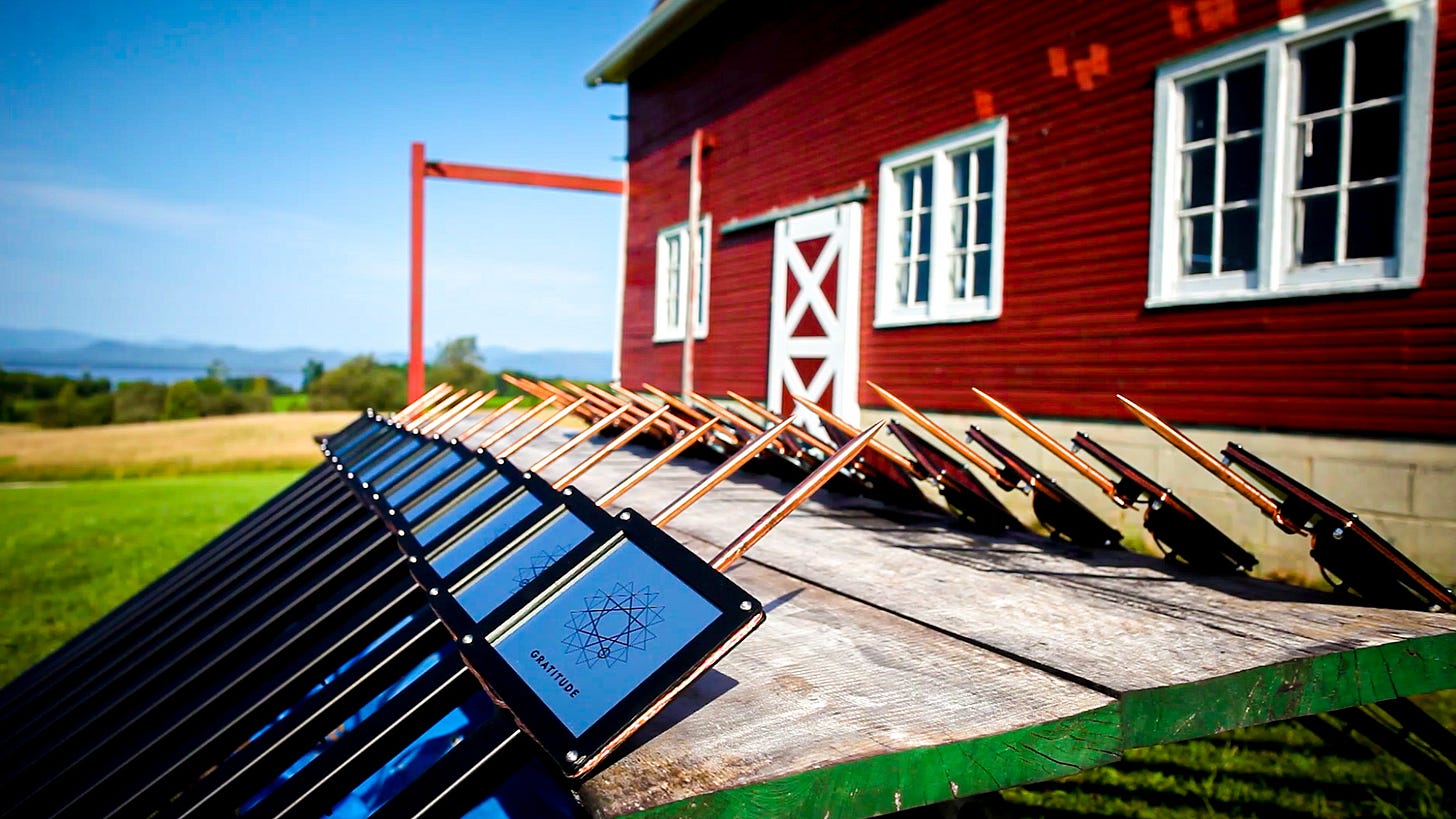
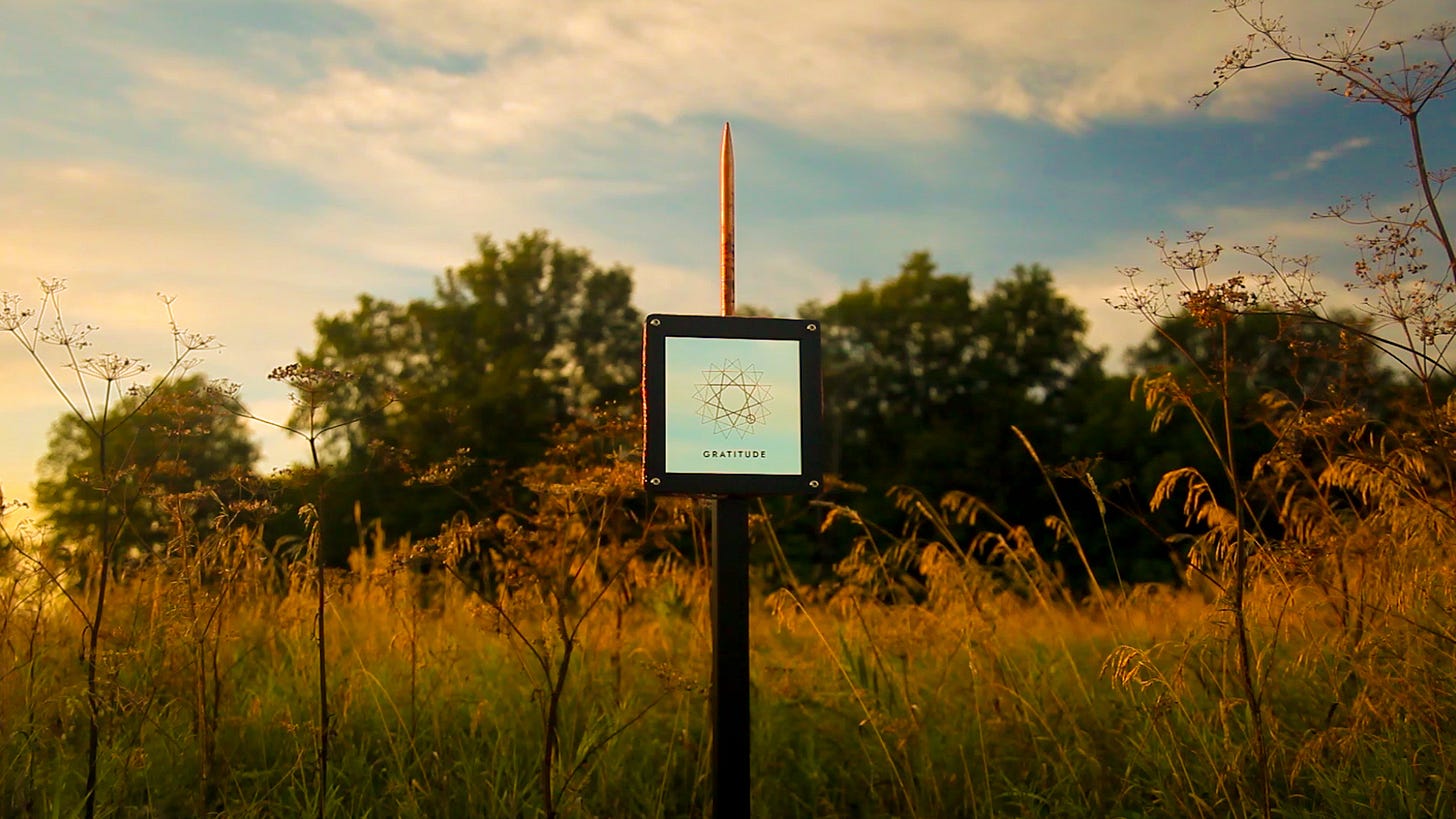

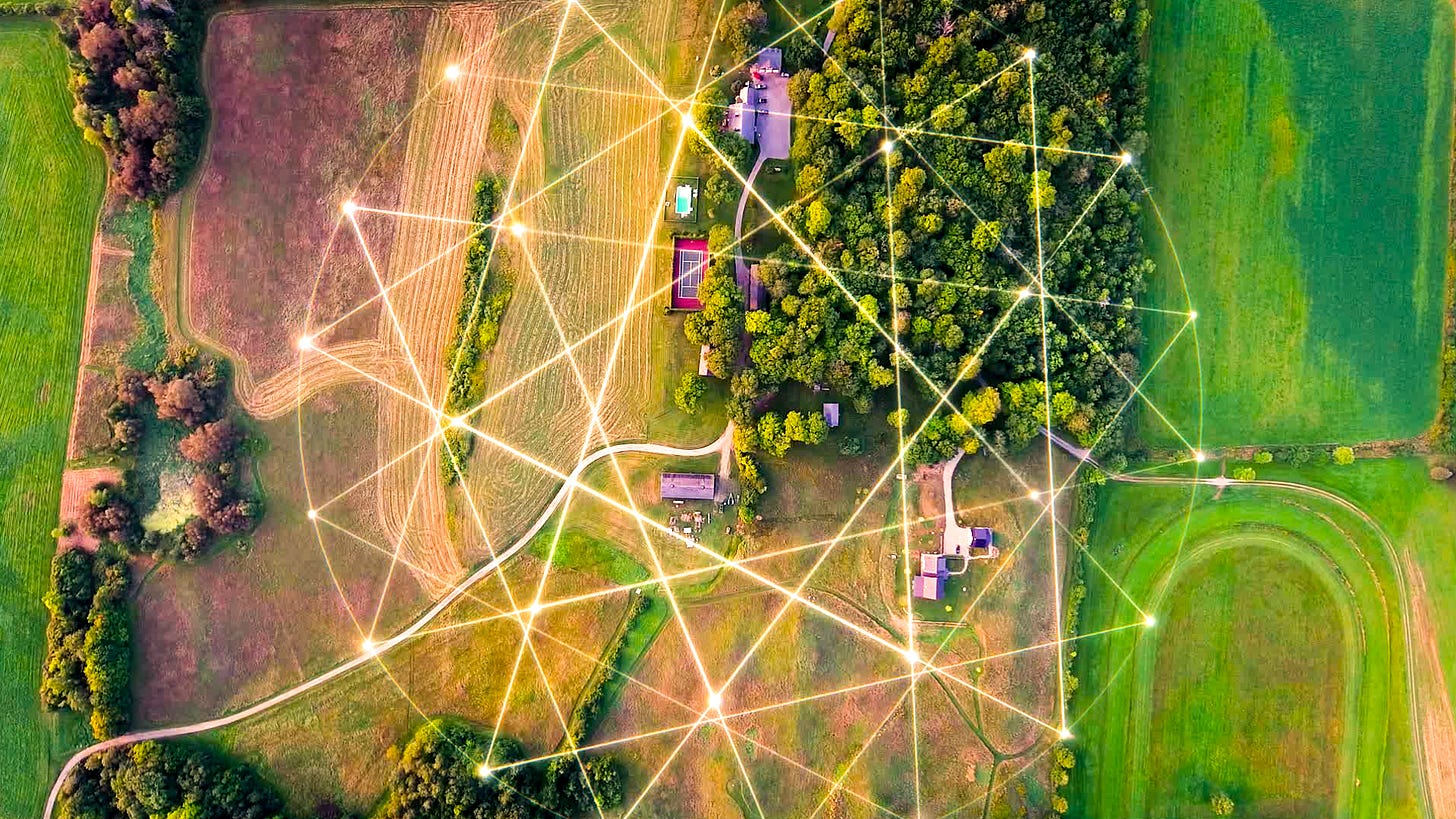

https://commons.m.wikimedia.org/wiki/File:Jacobs_Ladder_HM.jpg
That was happening parallel to when my daughter Rea was drawing stars with other children for their initiative to support lost refugee children... ain’t that something?